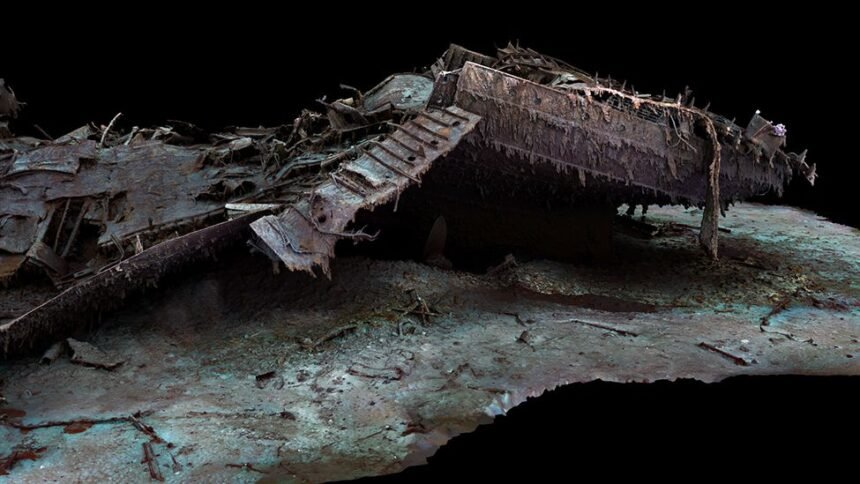A groundbreaking achievement was unveiled on Wednesday with the release of the first full-sized 3D scan of the Titanic shipwreck. This extraordinary endeavor promises to provide fresh insights into the ill-fated journey of the iconic ocean liner across the Atlantic more than a century ago. The high-resolution images, published by the BBC, offer a meticulous reconstruction of the wreck, located at a depth of approximately 4,000 meters (13,100 feet), using advanced deep-sea mapping technology.
The Titanic, a luxurious passenger liner, tragically sank after colliding with an iceberg during its maiden voyage from Southampton, England, to New York in April 1912, resulting in the loss of over 1,500 lives. Since the discovery of the shipwreck in 1985, roughly 650 kilometers (400 miles) off the coast of Canada, extensive explorations have taken place. However, previous attempts to capture the entirety of the ship proved challenging.
In 2022, deep-sea mapping company Magellan Ltd and Atlantic Productions undertook the ambitious task of creating a comprehensive scan of the Titanic. Utilizing remotely controlled submersibles from a specialized vessel, the team meticulously surveyed the wreckage for over 200 hours, capturing more than 700,000 images. The resulting 3D scan showcases intricate details of the wreck, including the separation of the stern and bow, surrounded by scattered debris, as if the ship were lifted from the water. Even the smallest elements, such as the serial number on one of the propellers, are now visible.
The expedition faced several challenges. Strict protocols prohibited any physical contact with the wreck to preserve its integrity. Additionally, the team needed to meticulously map every square centimeter, including less visually striking areas like mud in the debris field, to provide accurate context for the more significant features.
These new scans hold the potential to unlock further knowledge about the events that unfolded aboard the Titanic. Historians and scientists are racing against time as the wreck is gradually disintegrating over the years. The unprecedented 3D scan, derived directly from evidence and data, offers an unbiased perspective of the ship and may yield crucial information. Parks Stephenson, a longtime Titanic researcher, expressed enthusiasm about the project, emphasizing that there is still much to learn from the wreck, which stands as the “last surviving eyewitness to the disaster.” Stephenson believes that the ship has many untold stories yet to reveal.
The release of the full-sized 3D scan marks a significant milestone in understanding the Titanic’s tragic journey and paying tribute to the lives lost. The wealth of information contained within these detailed images has the potential to reshape our understanding of this historic event, shedding new light on the disaster and honoring the enduring legacy of the Titanic.
